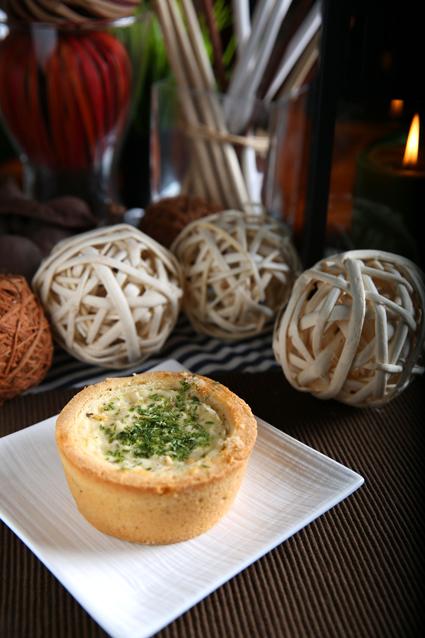Dining at the Grand Formosa Regent’s Brasserie Festival Buffet, one of the capital’s best-known all-you-can-eat restaurants, requires some strategizing.
For the best service and selection of food, make reservations at least several days in advance for lunch (NT$850 on weekdays and NT$1,050 on weekends) or dinner (NT$950 on weekdays or NT$1,050 on weekends). The Brasserie at night is a seafood lover’s dream, with giant piles of crabs, prawns served with cocktail sauce and a large variety of sashimi. The only drawback is that the crab claws do not come pre-cracked and some of the meat was a little bit dry. After slowly working my way through four of the crustaceans, I began to wish that I had visited the buffet’s other sections first.
The hot food buffet offers an excellent selection of both Chinese and Western dishes including pork knuckle with sauerkraut, sausage and meatballs, steamers filled with dim sum dumplings, a carving stand serving ham (roast beef is also available at dinner) and made-to-order items like shrimp and green onion pancakes. One of the best and most popular offerings is fresh shrimp tempura. Each battered and fried shellfish was grabbed almost as fast as it appeared, but the cooks quickly replenished the supply. Baskets filled with hot, steamed organic vegetables, including sweet potatoes and beets, are available for health conscious guests.

Photo: H.L.H.
Priced at NT$490 on weekdays and NT$590 on weekends, the buffet’s afternoon tea is aimed at diners who want to save money but still enjoy many of the same dishes that the Brasserie serves during dinner. The lower price means that there is a reduced selection of seafood (no crabs or prawns and a smaller variety of sashimi), but you can still pick from a fully stocked hot food bar, a variety of cold salads and enjoy your fill of desserts, including Haagen-Dazs ice cream.
Though an excellent deal, the afternoon tea’s long lines might test your patience. The Brasserie opens at 2:30pm and customers who arrive on time are treated with as much ceremony as guests at a wedding banquet, but that is to maintain crowd control. A hostess with a seating chart located my name and then handed me off to a server, who guided me to my seat in the Brasserie’s back room, which has soaring windows and a lovely view of Grand Formosa’s bucolic terrace.
Most patrons of the afternoon tea made a beeline for the seafood buffet, where a slow-moving line had already formed for fish soup, three kinds of seafood salad, sashimi, sushi and made-to-order hand rolls. There was a smaller variety of raw fish than at the dinner buffet (no tuna or salmon, for instance) and it was also of lower quality. The sushi rolls were also lackluster and, after standing in line for 15 minutes, I skipped the additional wait for the hand rolls. The line shortens considerably about half an hour into the afternoon tea service and it is worth first visiting the other sections (including the hot food bar and salad bar), which offer tastier dishes, before going to the seafood section.

Photo: H.L.H.
The Brasserie’s dessert bar selection is excellent throughout the day and worth saving some stomach space for. Be wary of the many custard treats the Brasserie serves in small glasses during its dinner service. They look luscious, with toppings of jewel-like berries and fruit, but turned out bland on a recent visit. On the other hand, the buffet excels at chocolate desserts; even the chocolate fountain seems to be better quality than its counterparts at other all-you-can-eat restaurants. A warm brownie served at dinner tasted delicious when topped with hot fudge and a scoop of praline and cream Haagen-Dazs. Breakfast is also served at the Brasserie every morning and is NT$600 on weekdays and weekends.

Photo: H.L.H.

In the March 9 edition of the Taipei Times a piece by Ninon Godefroy ran with the headine “The quiet, gentle rhythm of Taiwan.” It started with the line “Taiwan is a small, humble place. There is no Eiffel Tower, no pyramids — no singular attraction that draws the world’s attention.” I laughed out loud at that. This was out of no disrespect for the author or the piece, which made some interesting analogies and good points about how both Din Tai Fung’s and Taiwan Semiconductor Manufacturing Co’s (TSMC, 台積電) meticulous attention to detail and quality are not quite up to

April 21 to April 27 Hsieh Er’s (謝娥) political fortunes were rising fast after she got out of jail and joined the Chinese Nationalist Party (KMT) in December 1945. Not only did she hold key positions in various committees, she was elected the only woman on the Taipei City Council and headed to Nanjing in 1946 as the sole Taiwanese female representative to the National Constituent Assembly. With the support of first lady Soong May-ling (宋美齡), she started the Taipei Women’s Association and Taiwan Provincial Women’s Association, where she

It is one of the more remarkable facts of Taiwan history that it was never occupied or claimed by any of the numerous kingdoms of southern China — Han or otherwise — that lay just across the water from it. None of their brilliant ministers ever discovered that Taiwan was a “core interest” of the state whose annexation was “inevitable.” As Paul Kua notes in an excellent monograph laying out how the Portuguese gave Taiwan the name “Formosa,” the first Europeans to express an interest in occupying Taiwan were the Spanish. Tonio Andrade in his seminal work, How Taiwan Became Chinese,

Mongolian influencer Anudari Daarya looks effortlessly glamorous and carefree in her social media posts — but the classically trained pianist’s road to acceptance as a transgender artist has been anything but easy. She is one of a growing number of Mongolian LGBTQ youth challenging stereotypes and fighting for acceptance through media representation in the socially conservative country. LGBTQ Mongolians often hide their identities from their employers and colleagues for fear of discrimination, with a survey by the non-profit LGBT Centre Mongolia showing that only 20 percent of people felt comfortable coming out at work. Daarya, 25, said she has faced discrimination since she